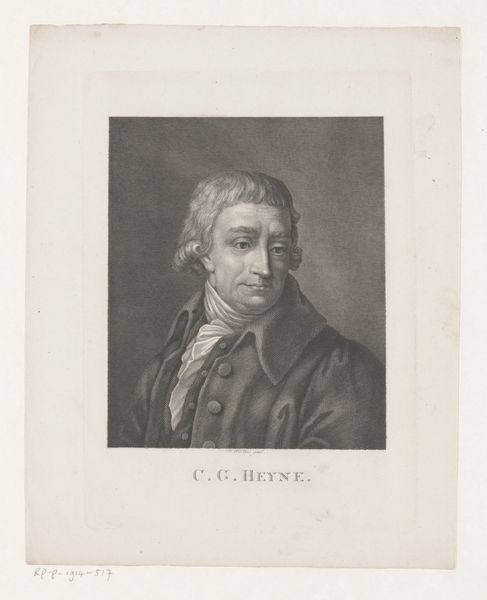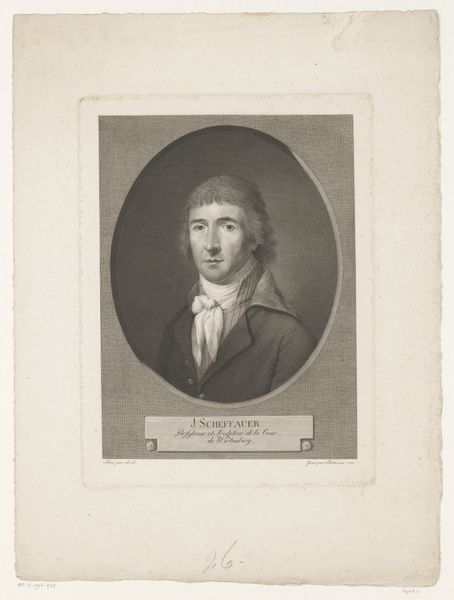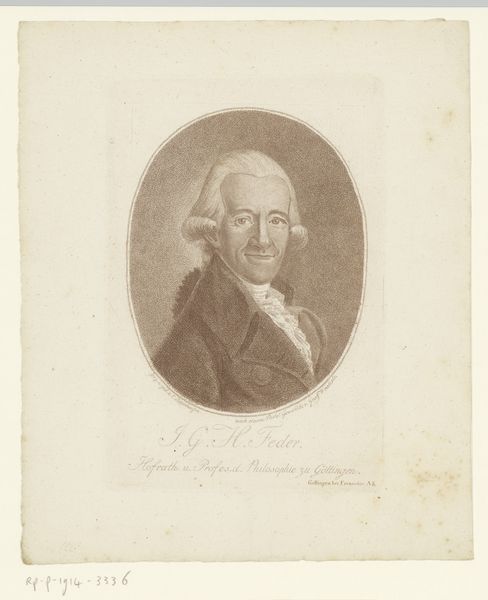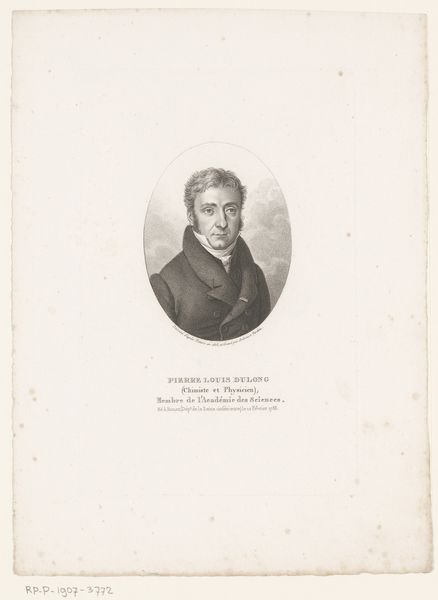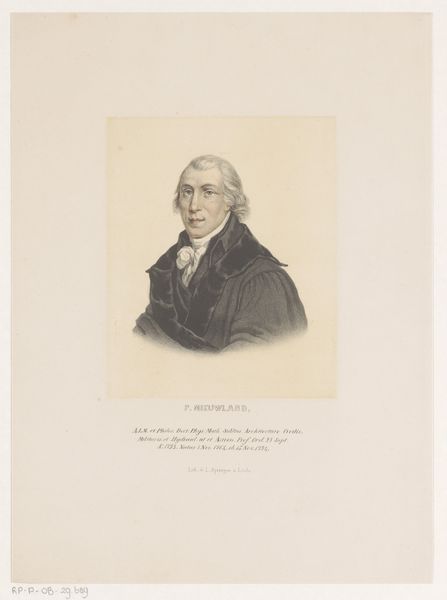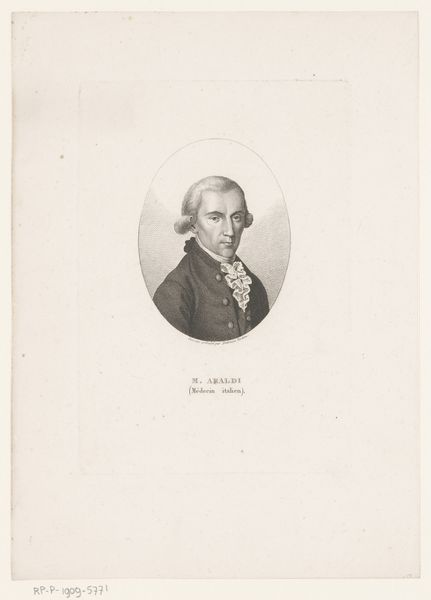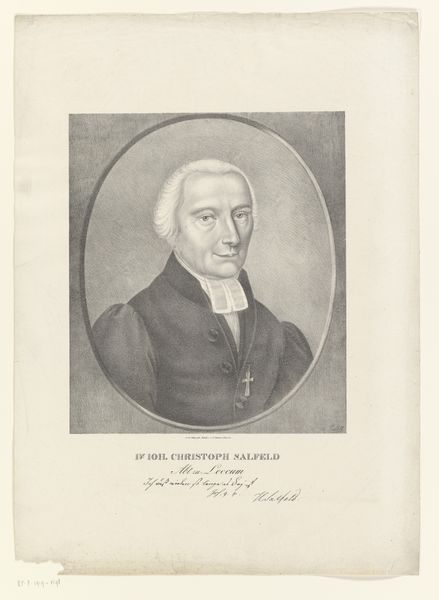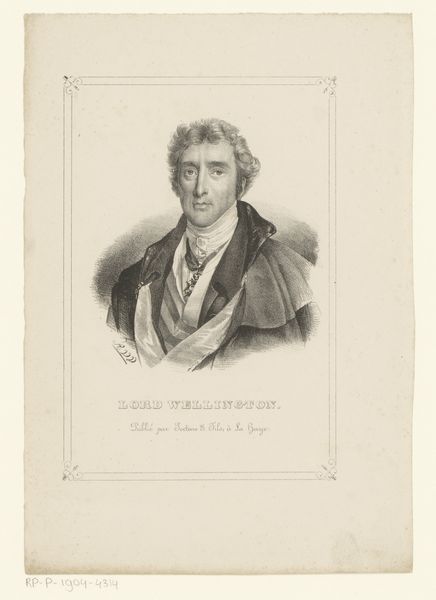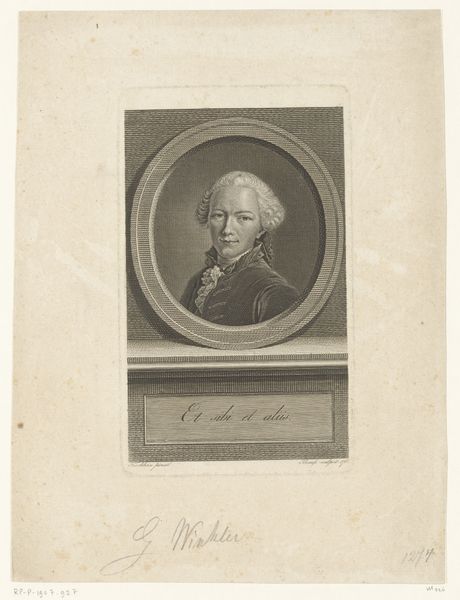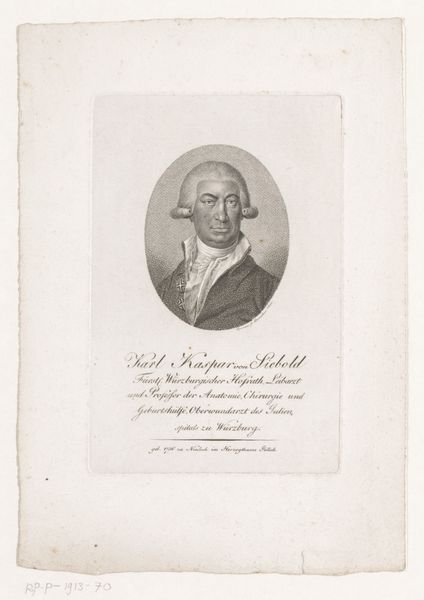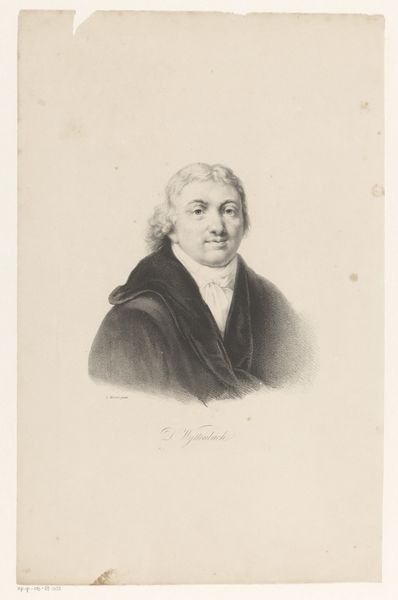
print, paper, graphite, engraving
#
portrait
#
neoclacissism
#
aged paper
# print
#
old engraving style
#
paper
#
line
#
graphite
#
history-painting
#
engraving
Dimensions: height 198 mm, width 137 mm
Copyright: Rijks Museum: Open Domain
Editor: Here we have "Portret van Anton Gottlieb Böhl," created sometime between 1797 and 1821 by Johann Adolf Rossmässler. It’s an engraving on paper, quite striking. The subject's expression feels…determined. What can you tell me about how this print would have functioned in its time? Curator: A pertinent question. Given the Neoclassical style, and its presence in the Rijksmuseum, it suggests an association with Enlightenment ideals of reason and civic virtue. Rossmässler, like many artists of that period, catered to a growing market for portraiture fuelled by a rising middle class. Who was Anton Gottlieb Böhl, and how would a print like this contribute to his identity or status? Editor: I'm not sure. I guess having your portrait made and distributed, even in print form, signified a certain level of social importance? Curator: Precisely! Consider the socio-political climate. This portrait isn't just a likeness; it's a carefully constructed image designed to project authority and respectability. The clean lines and balanced composition of the engraving – hallmarks of Neoclassicism – reinforce those ideas. Does this then give us some context for understanding portraiture’s social function in this period? Editor: It does, yes. So, beyond being a recognizable depiction, it actively participated in shaping Böhl’s public persona, cementing his place within a certain social stratum? Almost like an early form of strategic branding. Curator: Indeed. This brings to light the powerful connection between art, social structures and political aspirations in the late 18th and early 19th centuries. And furthermore, reveals the artist's hand in upholding those values and power structures. Editor: I see the engraving as more than just a picture now! I didn’t realize how much an image like this could say about society. Curator: These visual representations hold a huge weight, so they require a deeper look beyond just face value to see how they reflect historical values and social expectations.
Comments
No comments
Be the first to comment and join the conversation on the ultimate creative platform.
